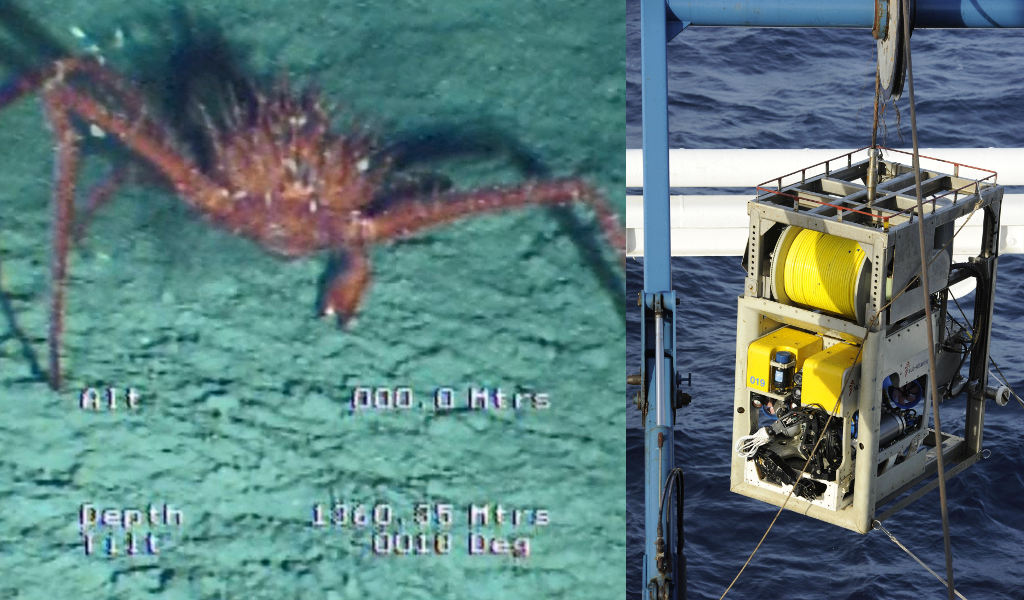Missions in the Pelotas River Basin have led to discoveries that may bring about new energy sources and even medicines
Por: PUCRS Magazine No.3 Annual Issue in English/2016

Connected to the ship, the robot is equipped with claws and containers to collect materials and still can record videos and take pictures at 1,300 meters under the water
For the first time in the Southwestern Atlantic (including part of the Brazilian territory and South America), crabs, mollusks, annelids and bacteria living in the depths of the ocean have been found; such creatures do not rely on the sun as their primary source of energy. At 1,300 meters deep, amid the darkness and mud, an oasis of foods and substances coming from the inside of the Earth enable the existence of these chemosynthetic communities. The Institute of Petroleum and Natural Resources of PUCRS (IPR) has found unknown microorganisms and animals 250 km off the coast, in missions carried out in the Rio Grande Cone, within the Pelotas River Basin, in Rio Grande do Sul. Projeto Conegas, funded by Petrobras, was intended to find gas hydrates, an important source of energy for the future.
In addition to these exploratory issues, another goal will be to find out more about these living beings and, based on the studies carried out, raise awareness of how society can benefit from them, by drawing inspiration for the production of new medications. These chemosynthetic communities live in depressions or concavities, called pockmarks, which can be up to 1km wide, and are related to associations of gas hydrates. “It is a largely unknown biological diversity, which makes it of a spectacular unique richness”, says the director of IPR, geologist João Marcelo Ketzer. The applications of such discovery are multifold. In the event of an oil leak in the sea, bacteria that feed on the substance may, for instance, clean out the area (bioremediation). Obtaining methane from CO2 is another possibility that has economic (resulting in fuel) and environmental implications (reducing greenhouse effect emissions into the atmosphere). Studying these microorganisms – and learning how much gas they produce (and how much from it comes from the underground) – may be helpful for the understanding of distribution of gas hydrate in the region.
They are considered non-conventional gas reserves, found in the deep sea, at great depths. Resembling ice rocks, they are formed by water molecules, forming a solid structure that is stabilized by gas molecules (methane, butane, propane and carbon dioxide). The quantity found on our planet may be larger than that of all resources of fossil origin (coal, petroleum or natural gas) put together. The big question is how to dissociate hydrate to get the gas. Japan already relies on sea production experiments.
Chemosynthetic communities have been found in two areas, each of which being larger than 10 km long. The integration between biologists and geologists is a highlight for the Institute of Petroleum and Natural Resources (IPR). It gives the expedition a multifaceted character. Besides the data sent by Petrobras, the team conducts an underwater landscape map (relying on the aid of a sonar and a seismometer), showing areas that have an accumulation of gas hydrates and the concavities, where the chemosynthetic communities live.
To find out more about it, please visit PUCRS Magazine 2016 annual issue